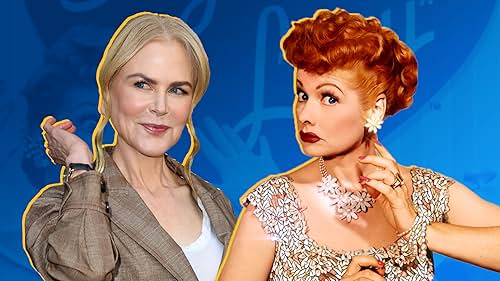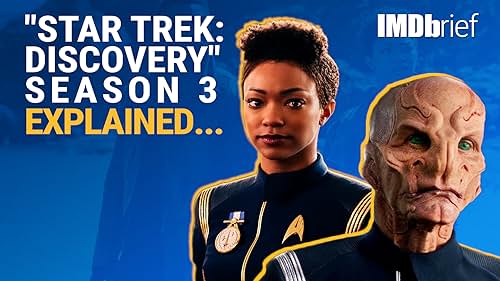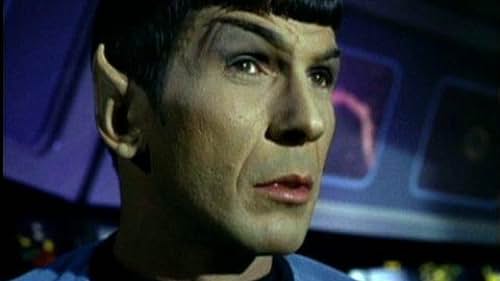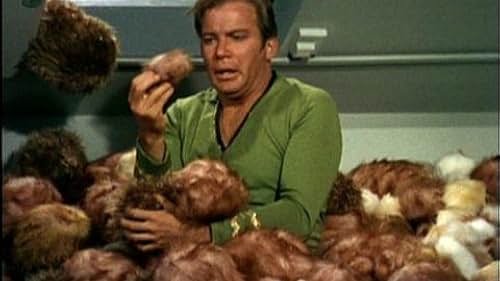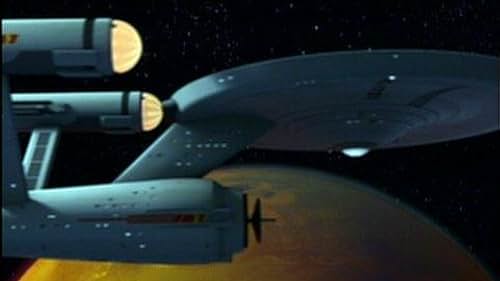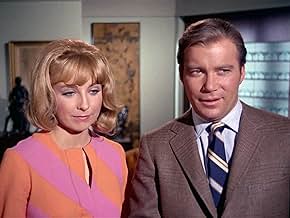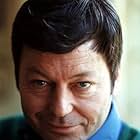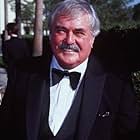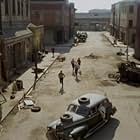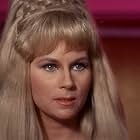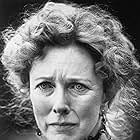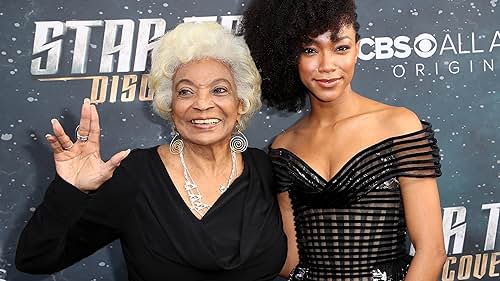In the 23rd Century, Captain James T. Kirk and the crew of the U.S.S. Enterprise explore the galaxy and defend the United Federation of Planets.In the 23rd Century, Captain James T. Kirk and the crew of the U.S.S. Enterprise explore the galaxy and defend the United Federation of Planets.In the 23rd Century, Captain James T. Kirk and the crew of the U.S.S. Enterprise explore the galaxy and defend the United Federation of Planets.
- Won 1 Primetime Emmy
- 16 wins & 31 nominations total
Browse episodes
Stellar Photos From the "Star Trek" TV Universe
Stellar Photos From the "Star Trek" TV Universe
We've rounded up some of our favorite photos from across the "Star Trek" TV universe. Take a look at memorable moments from red carpet premieres and classic episodes.
Storyline
Did you know
- TriviaShortly after the cancellation of the series due to low ratings, the staff of the marketing department of NBC confronted the network executives and berated them for canceling this show, which had been one of their most profitable series without anyone realizing it. They explained that although the show was never higher than number fifty-two in the general ratings, when running the numbers though the replacement of the Nielsen rating system, its audience profile had the largest concentration of viewers of ages 18 to 45. In other words, not only did the show have the most sought-after demographic that television advertisers hunger for, it was also one of the most successful series the network had ever aired, and did even better in reruns. This was more than ample justification to contact Gene Roddenberry with a request to revitalize the show. Unfortunately, this turned out impossible, as Paramount had just cleared out their warehouses of most of the sets and props, and rebuilding them would cost around $750,000, so instead, the studio greenlit Star Trek: The Animated Series (1973). Although Roddenberry wasn't really interested in doing an animated show, he agreed, in the hope that the show would be successful enough to revive the original series (which it unfortunately didn't).
- GoofsThe deck locations for Kirk's Quarters, Sickbay and Transporter Room vary (usually between decks 4-7) throughout the series.
- Crazy creditsOn some episodes, the closing credits show a still that is actually from the Star Trek blooper reel. It is a close-up of stunt man Bill Blackburn who played an android in Return to Tomorrow (1968), removing his latex make up. In the reel, He is shown taking it off, while an off-screen voice says "You wanted show business, you got it!"
- Alternate versionsIn 2006, CBS went back to the archives and created HD prints of every episode of the show. In addition to the new video transfer, they re-did all of the model shots and some matte paintings using CGI effects, and re-recorded the original theme song to clean it up. These "Enhanced" versions of the episodes aired on syndication and have been released on DVD and Blu-Ray.
- ConnectionsEdited into Ben 10: Secrets (2006)
- SoundtracksStar Trek
Music by Alexander Courage
Featured review
Does anyone need an introduction anymore to this great series? In the beginning Desilu said yes to the budget and schedule of Roddenberry only because there were many space stories being pitched and picked up in the mid-sixties, and this was going to be theirs. NBC used Star Trek to compete with Lost in Space, which was already on CBS the year before.
NBC being the all color network made the series very high key in lighting and primary-colored in the uniforms and the instrument displays, to better sell color TV at the time.
There were so many innovations shown on the screen from Dr.McCoy's diagnostic helpers to the auto door movements to hand communicators, transporters, phased light weapons, all of which impressed viewers. Added to that, they all seemed like they really worked!
People have said that Star Trek was the first to show an alien working harmoniously on a space crew and this is not fully true. You might laugh now, but in 1950 there was a very popular, well written, well acted radio and TV series called "Tom Corbett, Space Cadet" that had that very element working for it. Nothing much was very ground breaking on that show except that the acting was a cut above other shows. Roddenberry did go a few steps farther with Star Trek, adding a multi-racial crew and women having real authority as crew members or aliens.
Prior to Star Trek, the "alien" or "other" was a concept meant to inspire fear and justify violence. However it seemed that the series delighted in reversing this. Repeatedly the aliens are shown to be less dangerous than thought: the Talosians want the best for Capt. Pike, Balok isn't so bad, the Salt Creature is meant to be pitied, and so on. However if the villain was inanimate or a Frankenstein composed of man's ignorance, say NOMAD or the Planet Killer, then all violence the Federation can muster could be justified.
For my money Roddenberry, who appeared to be a casting couch throwback producer from an "Ed Wood" era, accomplished nothing so amazingly wonderful prior to Star Trek, and certainly nothing afterward that ever surpassed this singular achievement. He fought to keep Mr. Spock in the show and oversaw all the writing for a stable consistency,(I'm not a Harlan Ellison fan), so from this perspective, you could say he was born to create Star Trek then step off the stage. His whole life after Trek seemed warped by the show's gravity, and often he was pulled back into it for the 1987 follow on series and the first round of feature films.
Some audience members may prefer TNG, or the feature films. They may look back at the 1966 debut of Star Trek as merely "the future looked a lot like the Sixties". But why is it that the pure human emotions in those 79 episodes still attracts new converts? There must be something there that's communicating beyond the show's original five year mission. Star Trek still works as an adventure; one that considers human drama primary. That is unusual for any science fiction based story, wouldn't you say?
NBC being the all color network made the series very high key in lighting and primary-colored in the uniforms and the instrument displays, to better sell color TV at the time.
There were so many innovations shown on the screen from Dr.McCoy's diagnostic helpers to the auto door movements to hand communicators, transporters, phased light weapons, all of which impressed viewers. Added to that, they all seemed like they really worked!
People have said that Star Trek was the first to show an alien working harmoniously on a space crew and this is not fully true. You might laugh now, but in 1950 there was a very popular, well written, well acted radio and TV series called "Tom Corbett, Space Cadet" that had that very element working for it. Nothing much was very ground breaking on that show except that the acting was a cut above other shows. Roddenberry did go a few steps farther with Star Trek, adding a multi-racial crew and women having real authority as crew members or aliens.
Prior to Star Trek, the "alien" or "other" was a concept meant to inspire fear and justify violence. However it seemed that the series delighted in reversing this. Repeatedly the aliens are shown to be less dangerous than thought: the Talosians want the best for Capt. Pike, Balok isn't so bad, the Salt Creature is meant to be pitied, and so on. However if the villain was inanimate or a Frankenstein composed of man's ignorance, say NOMAD or the Planet Killer, then all violence the Federation can muster could be justified.
For my money Roddenberry, who appeared to be a casting couch throwback producer from an "Ed Wood" era, accomplished nothing so amazingly wonderful prior to Star Trek, and certainly nothing afterward that ever surpassed this singular achievement. He fought to keep Mr. Spock in the show and oversaw all the writing for a stable consistency,(I'm not a Harlan Ellison fan), so from this perspective, you could say he was born to create Star Trek then step off the stage. His whole life after Trek seemed warped by the show's gravity, and often he was pulled back into it for the 1987 follow on series and the first round of feature films.
Some audience members may prefer TNG, or the feature films. They may look back at the 1966 debut of Star Trek as merely "the future looked a lot like the Sixties". But why is it that the pure human emotions in those 79 episodes still attracts new converts? There must be something there that's communicating beyond the show's original five year mission. Star Trek still works as an adventure; one that considers human drama primary. That is unusual for any science fiction based story, wouldn't you say?
Lovable Creatures: Our Favorite Screen Pals
Lovable Creatures: Our Favorite Screen Pals
Baby ochi, Grogu, E.T., and more cuddly creatures we love to see on the screen.
Details
- Release date
- Country of origin
- Official sites
- Language
- Also known as
- Star Trek: The Original Series
- Filming locations
- Production companies
- See more company credits at IMDbPro
Contribute to this page
Suggest an edit or add missing content



